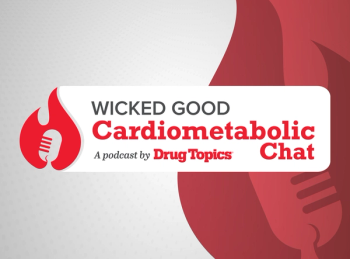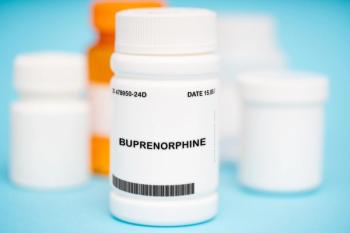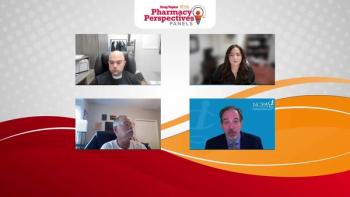
Real-Time Prescription Benefit Tools Must Be Improved for Patients, Payers
Researchers addressed the current trends in prescription drug use and spending among Medicare Advantage beneficiaries during the first year of clinician access to a real-time prescription benefit tool.
In the first year of using the real-time prescription benefit (RTPB) tool, researchers uncovered no association with patients’ and payers’ anticipated benefits, according to data from a study published in JAMA Network Open.1 They suggest further research is necessary to better understand how RTPB tools can be designed and deployed to maximize benefits.
“Despite wide variation in [the cost of] medications used to treat the same condition, point-of-care information on prescription drug costs is limited for both patients and clinicians,” wrote the study authors. “The lack of real-time insight into costs at the time of prescribing may result in patients facing high out-of-pocket (OOP) costs for prescribed drugs despite the presence of lower-cost, medically appropriate alternatives.”
For many years, experts and researchers alike have been deliberating on the best models for delivering clinical services and prescription medications. As all the models involve a complex system of insurers, payers, patients, and providers, understanding the methods of prescription drug benefits takes more than just some general knowledge.
READ MORE:
First, it is important to understand patients’ OOP costs as well as cost-sharing practices among many insurers and plan sponsors. Cost sharing is the arrangement by which patients pay insurers a portion of their costs for health care services or medications. Higher cost-sharing responsibilities for beneficiaries mean higher OOP costs.2
“The published literature shows consistent impacts of higher cost sharing on initiation and continuation of medications, and the greater the cost sharing, the worse the medication adherence,” wrote the authors of study findings published in the Journal of Managed Care & Specialty Pharmacy.3 “Today’s growing cost-containment environment should carefully consider the broader impact cost sharing has on treatment adherence, clinical outcomes, resource use, and total costs.”
Integrated with a wealth of data from the electronic health record (EHR), RTPB tools are used to ensure that stakeholders seeking a prescription medication can do so without the timely process of cross-checking formularies and comparing alternative options.4 In other words, it is a database that updates in real time with a variety of medication options for the necessary patient populations.
However, despite these recent technological advancements in pharmacy, as of late 2021, the American Medical Association claimed that RTPB technology was incomplete and needed optimization.4
“Our study leveraged the introduction of an RTPB tool in a national EHR vendor in March 2019 to study trends in prescription fills,” wrote the authors of the current study.1 “Using data from the tool in combination with pharmaceutical and medical claims data for Medicare Advantage (MA) beneficiaries at a nationwide health insurer, we used a difference-in-differences (DID) approach to estimate changes in prescription use and spending for beneficiaries filling prescriptions from clinicians at practices with the RTPB tool vs clinicians at practices without the tool.”
Researchers compared the differential changes in participants’ beneficiary outcomes either attributed or not attributed to practices with the RTPB tool. Using the DID approach, they sought trends in prescription drug spending and fills prescribed by physicians in the year after the RTPB tool was adopted. Data from 2018 to 2020 were used for the study and were analyzed from November 2022 to June 2024.
The final analysis included 2,805,060 MA beneficiaries (mean age, 70.9 years; 56.7% women).
“We found no change in prescription spending, number of fills, or percentage of prescriptions filled with the insurer’s mail-order pharmacy after the introduction of an RTPB tool,” the authors continued.1 “Although we detected a small but significant change in log prescription spending among lipid-modifying agents, more broadly, our subgroup analyses detected minimal to no significant changes in antidepressants, lipid-modifying agents, or high-cost fills.”
With the RTPB feature being a novel technology for physicians, pharmacists, and patients, the results of this study may not be surprising to some experts. Although the lack of change in this study can possibly be owed to physicians not using the tool often enough, collectively furthering patient and provider knowledge of the RTPB will only reduce barriers to cost-effective prescription drug data.
“In this cohort study of 2.8 million patients, we found no change in prescription spending after the introduction of an RTPB tool, likely due to underuse of the tool in the EHR,” concluded the authors.1 “RTPB tools have the potential to address physician behavior as a mechanism for lowering prescription drug spending, but our findings highlight the importance of leveraging the design of price transparency tools like RTPB to reduce barriers to accessing the information.”
READ MORE:
Are you ready to elevate your pharmacy practice? Sign up today for our
References
1. Zink A, Wehrly D, Bozzi D, et al. Prescription use and spending after the introduction of a real-time prescription benefit tool. JAMA Netw Open. 2025;8(7):e2519038. doi:10.1001/jamanetworkopen.2025.19038
2. BettareLLi MM. Cost sharing: implications of a well-intended benefits strategy. J Manag Care Spec Pharm. 2022;28(2):275-277. doi:10.18553/jmcp.2022.28.2.275
3. Fusco N, Sils B, Graff JS, et al. Cost-sharing and adherence, clinical outcomes, health care utilization, and costs: a systematic literature review. J Manag Care Spec Pharm. 2023;29(1):4-16. doi.10.18553/jmcp.2022.21270
4. Lubell J. Enable real-time Rx benefit info to boost truth in drug pricing. American Medical Association. November 17, 2021. Accessed July 15, 2025. https://www.ama-assn.org/delivering-care/public-health/enable-real-time-rx-benefit-info-boost-truth-drug-pricing
Newsletter
Pharmacy practice is always changing. Stay ahead of the curve with the Drug Topics newsletter and get the latest drug information, industry trends, and patient care tips.






































































































































